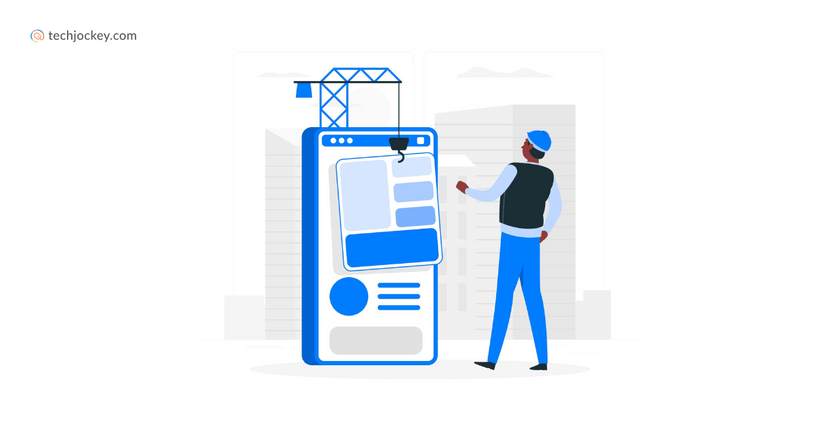How Construction Accounting Software Simplifies Heavy Machinery Loans Management?

Heavy machinery loans fuel growth in construction by enabling access to equipment without large upfront costs. However, managing these loans manually can strain resources. That’s where construction accounting software steps in with automating payments, optimizing asset use, and improving financial oversight.
Meant to help companies grow, these loans, at the same time, require efficient management, so repayments are made on time, and the assets acquired using them are used to the fullest.
The emergence of construction accounting software in this environs not only simplifies loan management, but it also helps businesses meet financial compliance requirements and make better accounting decisions. Keep reading to get a detailed view of the same…
The Role of Tracking of Heavy Machinery Loans in Construction
Heavy machinery loans are loans secured by construction companies to purchase heavy-duty equipment, including bulldozers, cranes, excavators, etc., without draining their working capital. These loans offer flexible repayment terms, so the liquidity of a business does not get obstructed in the process.
This is where construction accounting software proves invaluable. By integrating loan data with project financials, the software enables businesses to:
- Track repayments and interest in real time
- Ensure asset costs are properly allocated to specific jobs
- Maintain cash flow visibility
- Handle tax implications and depreciation schedules automatically
In essence, while equipment loans enable growth, construction accounting tools ensure that growth is managed efficiently minimizing financial risk and maximizing return on investment.
Challenges in Managing Heavy Machinery Loans Tracking
Heavy machinery loans prove difficult to handle as they come with significant financial obligations, approval requirements to complete, and stringent payment deadlines to meet. The success of your construction operations requires proper resolution of these hurdles, especially…
- Automated Repayment Tracking: Construction accounting tools auto-calculate due dates and interest, eliminating manual errors
- Built-in Depreciation Modules: Software handles IRS-compliant depreciation and tax reporting (e.g., Form 4562)
- Cash Flow Integration: Sync loan schedules with project billing to prevent liquidity issues
- Utilization Dashboards: Track equipment use vs loan value to optimize ROI
- Centralized Compliance Records: Store loan terms, receipts, and audit trails in one place
How Construction Accounting Software Helps in Managing Heavy Machinery Loans?
There are sundry ways in which construction accounting software helps streamline the acquisition and management of heavy machinery loans. Some of them are listed below for your understanding and convenience…
1. Automated Loan Tracking
All loan-related information gets centralized with construction accounting software. Using it, businesses get to automatically calculate and determine payment due dates while tracking accruing interest amounts.
The software is also programmed to send alerts/notifications, which help users manage upcoming payments and prevent unnecessary penalties. It provides a centralized loan dashboard for construction firms to monitor repayments across multiple lenders in real time.

Jonas Construction Software
Starting Price
Price on Request
2. Depreciation & Tax Management
The software is designed to automate depreciation computations according to asset types and depreciation methods specified in IRS guidelines. It also produces Form 4562 for Section 179 deductions, along with MACRS schedules, to maintain tax compliance.

ComputerEase
Starting Price
Price on Request
3. Cash Flow Forecasting
By integrating loan repayment information with project inflows, construction accounting software can make cash shortage predictions in real time. It also enables testing of how new loans and deferred client payments can affect a company’s liquidity levels. The cash flow dashboards of Sage 300 Construction, for instance, help users detect upcoming repayment risks with a 90-day notice.

FOUNDATION
Starting Price
Price on Request
4. Asset Utilization Insights
The system is programmed to keep track of equipment hours as well as fuel consumption and maintenance expenses. It also performs ROI analysis to evaluate their return on investment by comparing machinery revenue against loan costs.

CMiC Financials
Starting Price
Price on Request
5. Compliance & Audits
Construction accounting software securely stores all loan agreements together with lien waivers and payment receipts. It also records every transaction to provide both regulatory organizations and financial lenders with complete transparency.
Suggested Read: How Accounting Software for Builders Tracks Construction Costs
Best Practices for Managing Heavy Machinery Loans with Construction Accounting Software
Managing heavy machinery loans effectively is critical to maintaining both the financial health and operational efficiency of a construction company. By using construction accounting software strategically, companies can turn loan obligations into competitive advantages. Here are the best practices to make that happen:
Choose Specialized Software: As a first step, you should purchase a robust construction accounting software, such as Viewpoint Vista or Jonas Premier, that is specifically built for construction finance. While at it, prioritize features like customizable loan modules, integration with project management tools, mobile access for on-site updates, etc.
Link Loans to Specific Projects: You should perform project-specific cost distribution of interest payments and depreciation expenses. This helps stakeholders get both a clear understanding of profitability and justification for equipment investments.
Regularly Reconcile Data: Monthly comparison of loan accounts with asset values helps businesses detect discrepancies before financial statements are compiled. Construction accounting software can be used in this regard to enable automatic importing of lender statements.

Vyapar Billing Software
Starting Price
₹ 1099.00 excl. GST
Train Teams on Software Use: Businesses should conduct workshops to ensure finance and construction project teams know how to generate loan amortization reports, update asset maintenance logs, analyze equipment ROI, and more.
Refinance Strategically: The software can be used to simulate refinancing situations. For instance, switching from a 10% to a 6% loan on a $1M excavator saves $40,000 annually.
Monitor Market Trends: You should monitor both interest rates and equipment resale values. Software products such as Equipment Watch contain market integration features that help contractors identify the right time to purchase or sell machinery.
Leverage Real-Time Dashboards: Make optimal use of customizable dashboards offered by construction accounting tools to keep track of loan-to-value ratios, utilization rates, and refinancing opportunities.
Implement Preventive Maintenance: Businesses can make use of the software to schedule alerts for equipment maintenance according to their preferred schedule. This strategic maintenance will extend the assets’ operational time and, at the same time, decrease your replacement costs. Besides, the resale value of equipment that receives regular maintenance increases, too, since it appeals to buyers.
Audit-Proof Records: Make use of automated backup systems within cloud-based construction accounting software, Foundation, for instance, to prevent permanent data loss. Also, restrict sensitive loan data to authorized personnel. You can simplify reporting, too, by making use of the software’s ready-to-use templates for IRS and GAAP reporting standards.

Zoho Books
Starting Price
₹ 899.00 excl. GST
Conclusion
Though heavy machinery loans are an integral part of the construction biz, their management isn’t child’s play. For builders to invest in robust construction accounting software is a competitive necessity. By enabling automation, offering real-time insights, and meeting compliance ethics codes, these tools can ease the process, turning loans into strategic assets rather than liabilities.
If we have managed to convince you somehow, refer to our blog on Best Construction Accounting Software list and find yourself a tool that can make heavy machinery loan management easy for you!
Yashika Aneja is a Senior Content Writer at Techjockey, with over 5 years of experience in content creation and management. From writing about normal everyday affairs to profound fact-based stories on wide-ranging themes, including environment, technology, education, politics, social media, travel, lifestyle so on and so forth, she... Read more














